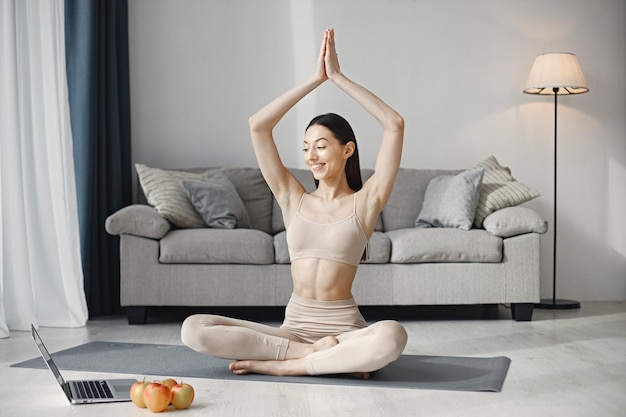
A yoga body isn’t just about flexible limbs; it’s also about improving memory, heart, and bone health, says Anna Magee.
The UK has become obsessed with yoga, with Brits spending around £790 million annually on classes and mats. While some yoga practices have become unconventional (think rage yoga, yoga on paddle boards, or even dog yoga), science continues to back up the real benefits of traditional yoga.
Researchers from UCLA discovered that a three-month course of yoga and meditation was more effective than memory exercises in reducing age-related brain changes. Another study found that yoga improved sleep for breast cancer survivors.
Lucy Edge, 53, turned to yoga when she was battling depression instead of taking prescribed anti-depressants. She took a six-month break from her advertising career to study yoga in India. While she didn’t return with a perfect yoga body, she came back happier and more content. Inspired by her experience, she wrote three books and founded Yoga Meds, which documents over 300 clinical trials showing the benefits of yoga for conditions ranging from arthritis to obesity.
Yoga’s benefits for memory are notable. The UCLA study monitored 25 adults over 55 through brain scans and memory tests after 12 weeks of memory exercises versus yoga and meditation. Those who practiced yoga not only improved their spatial and visual memories more significantly but also experienced reduced depression and anxiety. In the study, participants practiced one hour of Kundalini yoga weekly, incorporating gentle postures, breathing techniques, meditation, and chanting.
For heart health, yoga shows promising results. A 2014 review in the European Journal of Preventive Cardiology highlighted that yoga might lower the risk of heart disease as effectively as brisk walking. Stress reduction through yoga is one of the key benefits since stress greatly contributes to heart disease. Yoga can improve emotional health, helping with anxiety and depression, which are common after cardiac events.
Yoga also helps with physical conditions like back pain. Physiotherapist and yoga teacher Sarah Shone integrated yoga into the rehabilitation program for back pain, and 87% of participants reported pain reduction. The National Institute for Health and Care Excellence (NICE) advocates yoga for back pain, and its benefits go beyond pain relief. It supports pelvic floor muscles and bone density, making it versatile for all ages.
For beginners, it’s essential to inform your instructor about any health issues and start with gentle styles like Hatha or Iyengar yoga. These are less intense than power yoga forms and can be adapted for specific conditions such as back pain.
When it comes to yoga props like mats, there are a few considerations. Think about where you’ll use the mat, the weight for portability, and choosing a thickness that protects your joints. Healthista recommends the Elephant Cork Yoga mat from Valka Yoga. Made from eco-friendly, renewable resources, it promises comfort and joint support. Additionally, investing in a yoga block, like the matching Elephant design from Valka, can ease transitions into more difficult poses.
For different yoga styles, here’s what you can try:
– Yin or Restorative yoga for a relaxing stretch with support.
– Vinyasa Flow for a dance-like sequence linking breath to posture.
– Iyengar yoga focuses on precise alignment, ideal for beginners.
– Anusara yoga, a modern form from LA, combines alignment with flowing movements and upbeat music.
– Yoga Therapy for healing specific injuries or illnesses with trained instructors.
Whether you’re flexible or not, yoga can benefit everyone. Choose a style that fits your needs and enjoy the journey of better health.